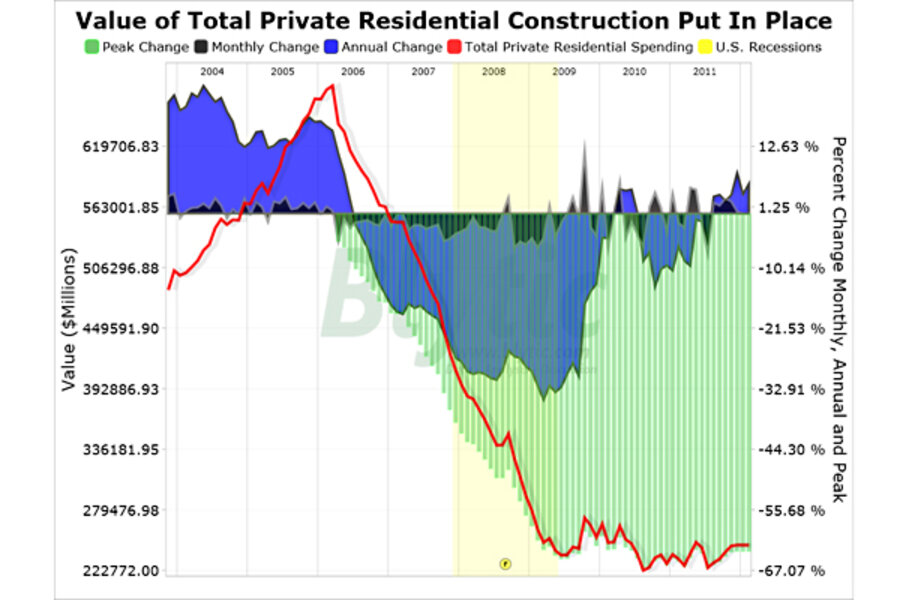Construction spending goes flat
Today, the U.S. Census Bureau released their latest read of construction spending showing a flattening from last month at near-cycle low levels of spending in February for residential construction while indicating a notable pullback for total non-residential spending.
On a month-to-month basis, total residential spending increased a slight 0.03% from January and rose 5.59% above the level seen in February 2011 while remaining a whopping 63.56% below the peak level seen in 2006.
Single family construction spending declined 1.51% since January but rose 4.21% since February 2011 and remained a whopping 76.29% below it's peak in 2006.
Non-residential construction spending declined 1.57% since January but climbed a whopping 14.49% above the level seen in February 2011 but remained a whopping 34.12% below the peak level reached in October 2008.
The following chart shows private residential construction spending since 2004.






